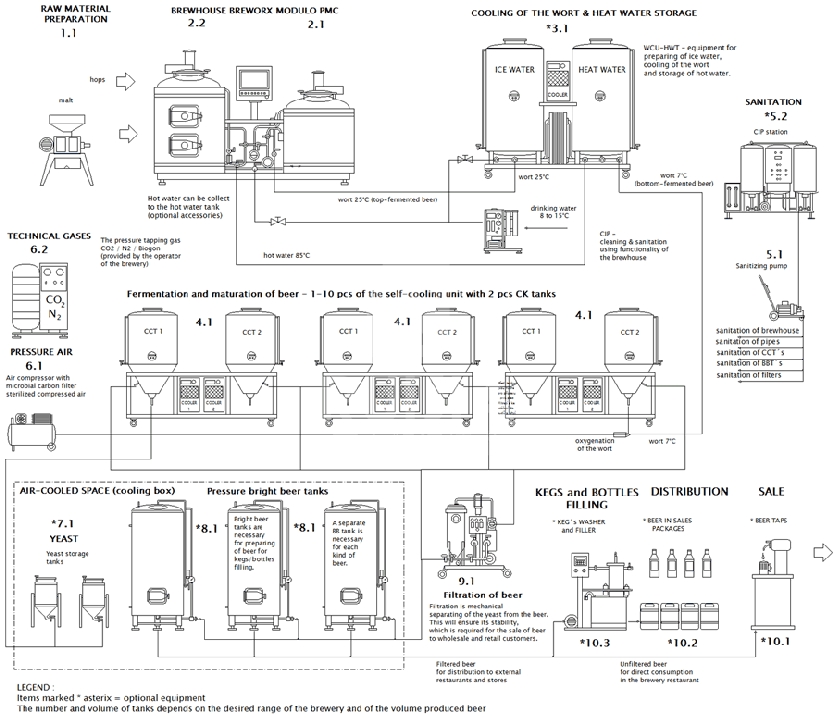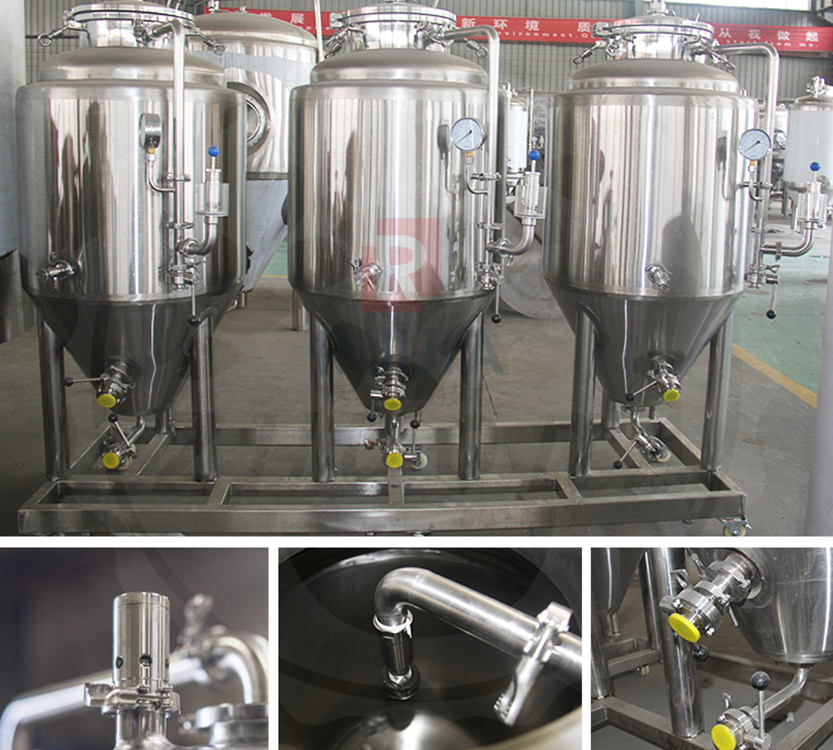Copper mash

Copper fermenter
12/06/2017
Copper brewing equipment
12/06/2017Our copper mash used in Pub, bar and restaurant. It is a luxury logo, will be attractive for customer, named “ Flash point”.
For the cooper mash tank, it also named “ Red copper” mash tank. Cooper mash 4 kinds of type:
1. Red cooper 2 vessels mash
2. Red cooper 3 vessels mash
3. Red cooper 4 vessels mash
4. Red cooper 5 vessels mash
For the cooper mash tank, it also named “ Red copper” mash tank. Cooper mash 4 kinds of type:
1. Red cooper 2 vessels mash
2. Red cooper 3 vessels mash
3. Red cooper 4 vessels mash
4. Red cooper 5 vessels mash
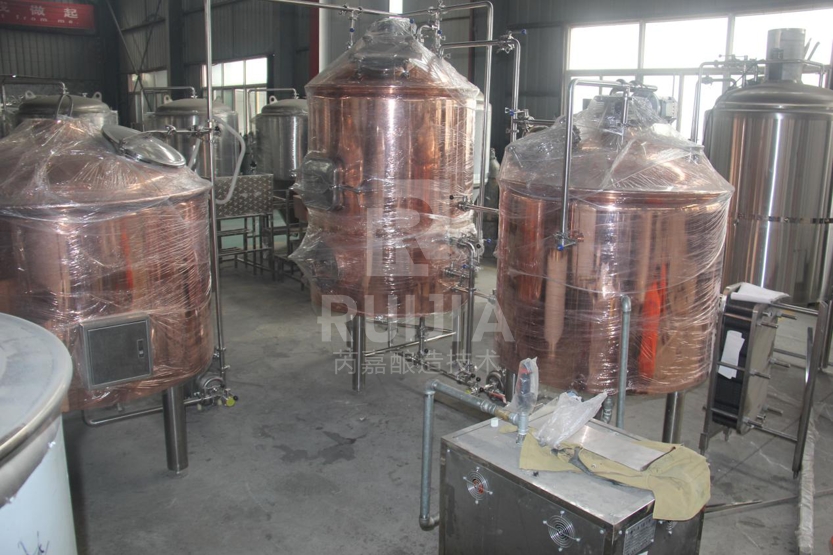
Copper mash Specification
| No. | Name | Mark |
| 1 | 2 vessels | Mash/lauter tun Kettle/whirlpool tun |
| 2 | 3 vessels | Mash/lauter tun Kettle/whirlpool tun Hot water tank |
| 3 | 4 vessels | Mash tun lauter tun Kettle/whirlpool tun Hot water tank |
| 4 | 5 vessels | Mash tun lauter tun Kettle tun whirlpool tun Hot water tank |
Copper mash Introduction
Mash tun
Mash tun is a vessel used in the mashing process to convert the starches in crushed grains into sugars for fermentation. The mash tun can be single function or can also have a false bottom and spigot so that the sparging process can be done in the same vessel.Lauter tun
The lauter tun is used for filtering and clarifying the sugar liquid (called wort) out of the heated water-malt mixture (called mash) that comes from the mashing tun.Kettle tun
After lautering, the beer wort is boiled with hops (and other flavourings if used)in a large tank known as a brew kettle.Whirlpool tun
At the end of the boil, the hopped wort settles to clarify in a vessel called a "whirlpool" where there is a tangential inlet of wort. Whirlpool can happen in the kettle because there is no obstacle inside the kettle.Hot water tank
For the hot water tank, it need to provide hot power for next brewing, it will save more brewing time.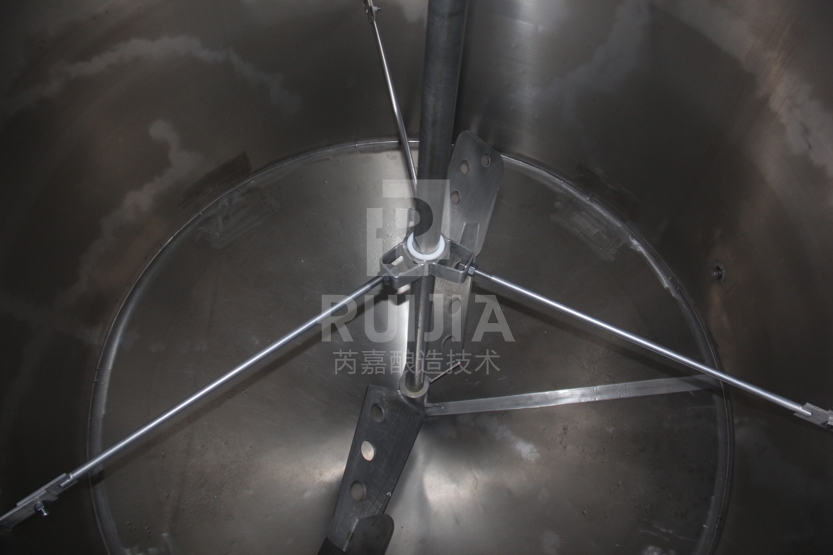
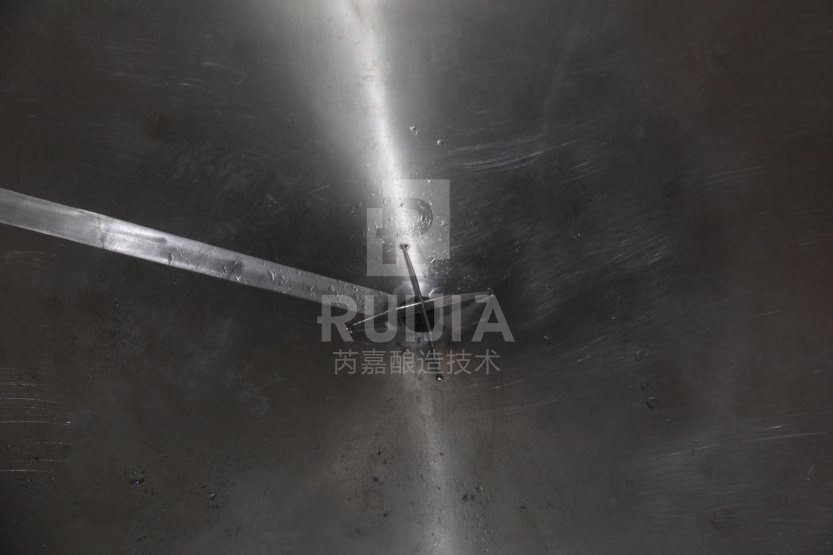
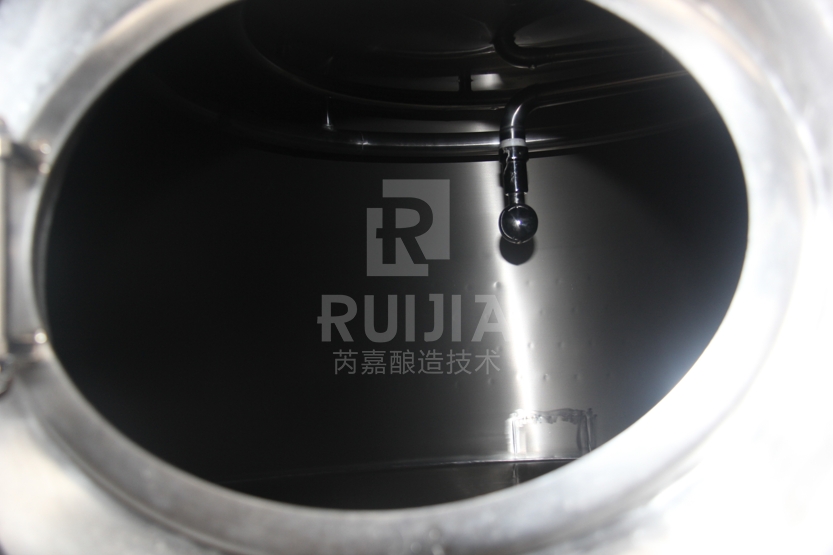
How to brewing beer of 300L beer brewing equipment?
I. Mashing
1. Check the equipment: make sure mash/boiling tun, lauter/whirlpool tun, pipeline, valves, gauges and water, power, steam resource could work well. If there is no problem, washing all the equipment and prepare to feed material.2. Hot water sterilization: A. Adding 300kg clean water into the mash/boiling tun, start to heat. During heating, intermittently mixing to make sure heating evenly. When the temperature reaches 90 ℃, stop heating.
B.open the raw material valve and back flow valve of the mash/boiling tun, start the mash pump, using hot water to sterilize the pipeline, recycling fro 5 min and stop. Then connect the wort outlet of the heat exchanger to the mash/boiling tun, make the hot water recycle for 5min.Then close the wort valve on the heat exchanger.
C. Open the material inlet on the lauter tun, pump the hot water into the lauter tun, then close the material valve at the bottom of the mash/boiling tun, open the backflow valve on the lauter tun, recycle 5min. Then pump the hot water from the tangential whirlpool port to the whirlpool tun for washing the spent grains.
3. Prepare production water: add some water(about 260kg) into the mash/boiling tun, at the same time switch on the electric heating and begin to heat. During heating, mixing intermittently to make sure the water to be heated evenly. When the temperature reaches to 55℃, stop heating and open the material valves on the mash/boiling tun and lauter tun, pump the production water into the lauter tun.
4. Feeding 55 ℃ (protein decomposition): start to mixer of the lauter tun, add the milled barley into the lauter tun, mix evenly, stop mixing, then start to time(for brewing wheat beer, add barley at first, after mixing evenly, add wheat and then mix evenly). Keep the temperature staying at 55±1℃ for 70min.
5. Producing mash water: add hot water upto 300kg into the mash/boiling tun, start to heat, when the temperature reaches to 100℃, stop heating; open some related valve, start wort pump and begin to mash.
6. Producing mash water 66 ℃ (starch saccharification): after finishing the protein decomposition, set the mash temperature. Start the mixer of the lauter tun, pump the hot water from the mash/boiling tun into the lauter tun, rise the temperature to the set temperature(usually it is 66℃) to mash, the mash time is usually around 60 to 70min.
7. After completing the mashing, set the temperature of killing the enzyme, start to mix, pump the hot water from the mash/boiling tun to the lauter tun, rise the temperature to 78℃, stop mixing, stay for 10 to 15min, let it form the filter bed by itself.
II. Wort lauter introduction
1. Wort back flow: Pay attention to the stillness time, once reaching the required time, start to back flow in time. Open the material valve, backflow valve and wort pump on the lauter tun, flow back the wort in the lauter tun for 5 to 10 min. When the wort become bright and clean, close the backflow valve of the lauter tun. Open the backflow valve on the mash/boiling tun, pump the wort into the mash/boiling tun.Special note: When using wort pump to draw off the wort from the lauter tun
the flow rate of wort should be controlled very carefully and keep the stability of back flow. 2. Testing the first produced wort: after 20 min lautering, take some sample of the wort to test the Concentration of the original wort:
A. Hot wort treatment: take a testing barrel of wort from the mash/boiling tank, and then add them to the tap water barrel slowly, cooling the wort to 30 ℃ (other cooling means could also be accepted, but cold water isforbidden to add into the wort), and shaking up, staying balanced.
B. Sugar testing: using the electric sugar meter to test the sugar of the wort and record the data.
3. Wash the spent grains: When the filter bed emerges after lautering the original wort, start to wash the spent grain. Pump the water from the whirlpool tun to the lauter tun through the back flow pipes, then crawl move (must not be launched directly) the lauter tun for stirring. After the spent grains turnup, stirring 3 to 5 minutes, and then staying 10 to 15 minutes. Follow step 1 of “Wort back flow “ to get the second time wort. If necessary, can use the same method to get the three times wort.
4. Mixed concentration testing: after washing the spent grain for twice and three times, test the mixed concentration(calculate based on total evaporation quantity with 10%, boiling time with 60 min, if the concentration of the wort is 10BX after the boiling, the mixed concentration will be controlled from 9.3 to 9.5BX.) Special note: during the lauter process, if the wort is not clear or difficult to lauter, stirring the wort and staying for 10 min, back flow again until it is bright and clear.
5. Spent grains removing: after washing the spent grains twice or three times and testing the mixed concentration of the wort until meeting the requirements, stop lautering. Open the outlet and drain outlet of the lauter tun, discharge the residual wort in the lauter tun, then open the chaff door, use the rake to remove the spent grains(note: please do not open the spent grain door violently to avoid damaging or deforming the chaff door.)
6. Cleaning: after finishing the spent grains removing, using clean water to wash the inwall of the lauter tun, false bottom and raker, then open the drain outlet of at the bottom of the lauter tun to discharge the drain.
III. Wort boiling introduction
1. Heating: when the wort level cover the heating jacket or the electric heating tube, start to heat. During heating period, pay attention to start the mixing intermittently. 2. Wort boiling: Start to time when the wort is boiling, the total boiling time is 60 min, keep the wort always be in boiling. Control the boiling end wort concentration is from 9.5 to 10.5BX, if the concentration does not reach to 9.5BX within required time, it could be appropriately delayed for a while.3. Add hops: After boiling 5 minutes and 5 minutes before end of boiling, add bitter hops and flavor hops respectively. The quantity is 120 g (0.04%) and 60 g (0.02%). Special note: A. During boiling, carefully control the electricity, steam source, hot wort to avoid overflowing, to prevent scald.
B. After weighing hops, original package should be sealed immediately and will be kept in refrigerator to anti-oxidation.
IV. Wort whirlpool introduction
After boiling, stop electric heating. Open the material valve at the bottom of the mash/boiling tun, wort pump and tangential input valve of the whirlpool tun, pump all the wort from the mash/boiling tun into the whirlpool tun. Then close the material valve at bottom of the mash/boiling tun, open the material valve of the whirlpool tun and recycle for 15min. Close the related valves and pumps and stay for 40 min. Then open the drain outlet of the whirlpool tun, discharge the trub(be careful to keep away from the pipe nozzle to avoid being scalded)V. Wort cooling instruction
1. Checking: check the plate heat exchanger, valves, gauges, glycol water, tap water, oxygen(bottled pure oxygen)working well or not, if all work well, prepare to cool.2. Cleaning: connect the wort pipe lines with the fermenter, sterilizing the fermenter tanks completely through four steps, close the valves to stand by(special notice: the residual H2O2 int the pipeline, heat exchanger should be discharged roughly before cooling)
3. Cooling: open the tap water, glycol water valve, glycol water pump, then open the wort valves, wort pump, oxygen valve to cool the wort. Control the cooling temperature: barley beer:9.0±0.5℃,wheat beer 13.0±0.5℃
4. Discharge the residual wort: before cooling, using wort to drive out all the residual cleaning water in the heat exchanger, then let the wort flow into the fermenters.
5. Oxygenation: while cooling the wort oxygenating uninterruptedly to the wort and the dose of the oxygen will be 1 - 2 times of wort.(when the bubble in the sight glass is equal to the wort, it is OK. After the wort coming into the fermenter, the oxygenation will continue to last for 30min).
6. Recovery: after cooling the wort, using oxygen to drive the residual wort in the pipe line to the fermenters. Then clean the mash/boiling tun, lauter/whirlpool tun and all the pipe line, heat exchanger for 10 min.
